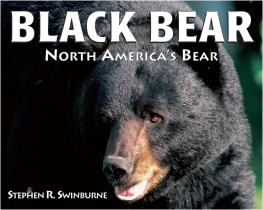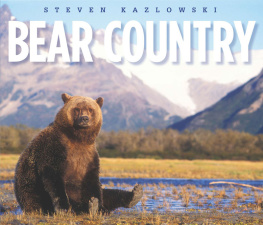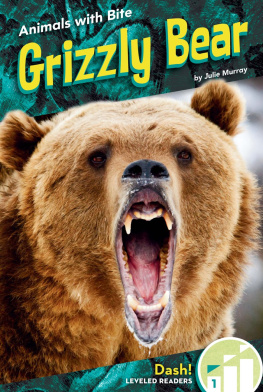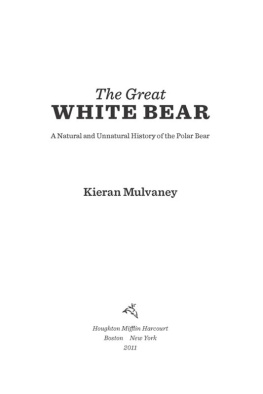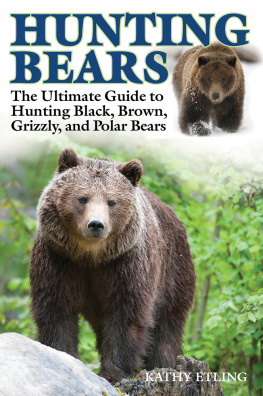Copyright 1985, 2003 Stephen Herrero
Revised Canadian edition published by McClelland & Stewart Ltd. 2003
Revised edition published in the United States by The Lyons Press 2002
First Canadian edition published by Hurtig Publishers 1985
First edition published in the United States by Lyons & Burford 1985
All rights reserved. The use of any part of this publication reproduced, transmitted in any form or by any means, electronic, mechanical, photocopying, recording, or otherwise, or stored in a retrieval system, without the prior written consent of the publisher or, in case of photocopying or other reprographic copying, a licence from the Canadian Copyright Licensing Agency is an infringement of the copyright law.
National Library of Canada Cataloguing in Publication Data
Herrero, Stephen
Bear attacks : their causes and avoidance / Stephen Herrero.
Rev. Canadian ed.
eISBN: 978-1-55199-480-2
1. Bear attacksCanada. 2. Bear attacksUnited States. 3. Black bearBehavior. 4. Grizzly bearBehavior. 5. Outdoor recreationSafety measures. I. Title.
QL737.C27H48 2002 599.78 C20029031397
We acknowledge the financial support of the Government of Canada through the Book Publishing Industry Development Program for our publishing activities. We further acknowledge the support of the Canada Council for the Arts and the Ontario Arts Council for our publishing program.
Illustrations by Chuck Blyth Photo on by Larry Aumiller
McClelland & Stewart Ltd.
75 Sherbourne Street
Toronto, Ontario
M5A 2P9
www.mcclelland.com
v3.1
Contents
To Blaine, Martha, David, and Robin for their help and love. With thanks to each of the hundreds of people and agencies that not only made my book possible but made it a pleasure to write. Special thanks to those who reviewed and made editorial suggestions concerning the draft manuscript: Peter Burford, Gray Campbell, Dr. Fred Dean, Bev Diamond, Dr. Richard Knight, Cliff Martinka, Martha McCallum, Wayne McCrory, Dr. Lynn Rogers, Richard Russell, Barney Smith, Linda Sutterlin, Dr. Dixon Thompson, and David and Robin Wensley-Hamer. I also thank the following agencies for financial support: Canadian National Sportsmans Fund; National Science and Engineering Research Council of Canada; Alberta Recreation, Parks and Wildlife Foundation; the University of Calgary; and the Killam Foundation.
Thanks to Alaska Northwest Publishing Company, Anchorage, for permission to quote extensively from Larry Kaniuts book, Alaska Bear Tales, 1983.
A Caution to Readers
Bear Attacks: Their Causes and Avoidance
Bear attacks are rare but can cause injury or death. Bears are complex, fascinating animals. As with people, this makes the specific behavior of a given bear, at a certain time, difficult to predict. In this book I distill a lot of experience, knowledge, and understanding regarding bears. By applying this understanding you should increase your margin of safety and enjoyment in bear country. You will find out how unlikely injury is. Even if you act as I suggest, however, I cant guarantee a bear wont injure you.
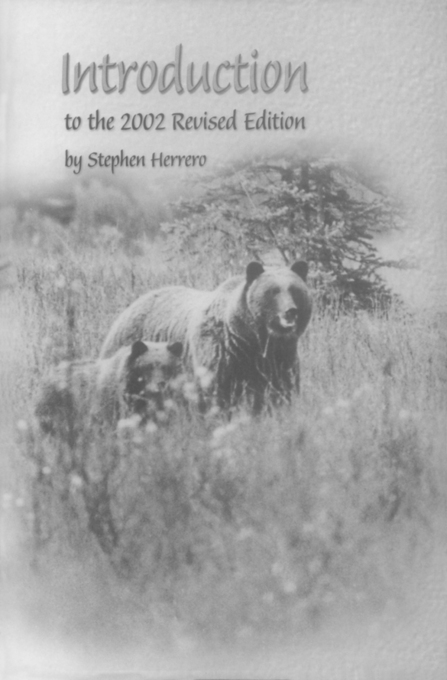
Two months ago, in the middle of September, I received a phone call from a woman who lived in the country north of Armstrong, British Columbia, Canada. She was seeking advice about bears. A friend of hers had read Bear Attacks: Their Causes and Avoidance and recommended she call me. The caller had retired to the country after living in big cities most of her life. Part of her retirement dream was to be close to nature. She confided to me, however, that she had been on her acreage for two years but still hadnt even gone for a hike because she was so afraid of bears.
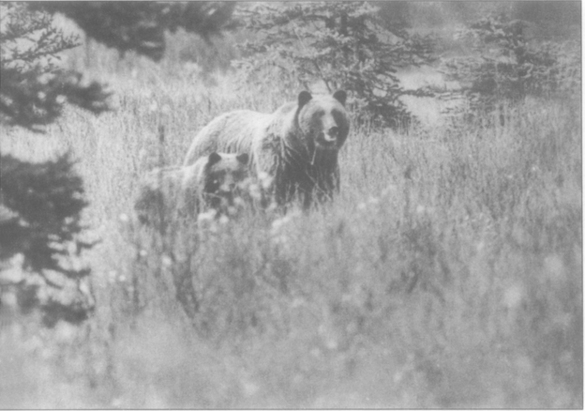
Grizzly bear female and young, Banff National Park. Chris Shank
I tried to assure her that if she took time to learn about bears she could enjoy nature as she hoped. She was one of thousands of people estranged from nature because of fear of the unknown regarding bears. What she knew was that bears could seriously hurt, even kill people. This she read in newspapers and magazines. I tried to put this into perspective. I said bear attacks are rare events. I told her that in North America there are an estimated nine hundred thousand black bears and sixty thousand grizzly bears. Each year there are millions of times in which each species is close to people and no threat or injury results. I said most people enjoy seeing bears. I was honest and admitted there is some danger. I told her that in Canada and the United States during the decade of the 1990s bears killed twenty-nine ). I hate to see peoples lives crippled by fear based on ignorance.
I wrote Bear Attacks: Their Causes and Avoidance for people like this woman. I love people who are drawn to nature and bears and their wildland environment. We can share what is left of our wildland areas, deriving joy from knowing bears are there, seeing their sign, and occasionally seeing one. This coexistence, however, needs to be based on understanding bears behavior and needs and minimizing the danger bears occasionally pose.
Bear Attacks: Their Causes and Avoidance was first published in 1985 and has been in print ever since. It has sold 82,585 copies in English and has been translated into German and Japanese. The book has endured because it offers understanding regarding a topic of vital interest to people who live in or visit bear country. The book is based on seventeen years of research and scientific analysis of detailed records of 414 bearhuman interactions, 357 of which involved injury or aggression. My gut-level understanding of the results comes from myself and my students having put in tens of thousands of hours on foot, in the field, studying bears from Alaska to northern Mexicoand me personally having had thousands of interactions with bears.
My research for this book revealed new understanding and perspective regarding the causes and avoidance of bear attacks. This understanding has stood the test of timeas it should have, since the behavior and ecology of bears were designed by millions of years of evolution and are not going to change in a few years. The fundamental premise of this book is that knowledge of bear behavior and ecology can empower people to decrease the chance of unwanted bear encounters. Should an encounter occur, this knowledge can help decrease the risk of attack and injury to people and bears. Some of the original findings:
There are two main types of bear attacks, defensive and predatory, and different ways to respond to each.
Playing dead is your best bet for minimizing injury during defensive attacks, but you must be able to tell the difference between a defensive and a predatory attack.
Fighting back, using any available weapon, is essential in a predatory attack. Most serious or fatal attacks by black bears have been predatory.
Certain bears used to feeding on peoples food and garbage become dangerous nuisances and in the worst cases have killed people.


